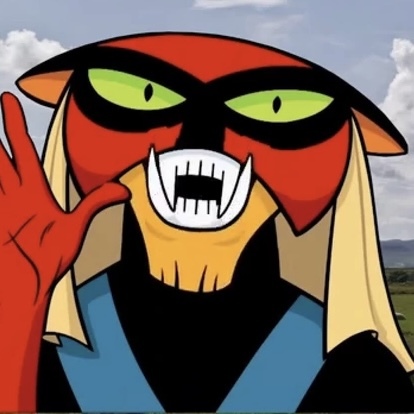The Salvadoran Civil War was fought between the military-led junta government of El Salvador and the Farabundo Martí National Liberation Front (FMLN) (a coalition of left-wing groups) from 15 October 1979 to 16 January 1992. A coup on October 15, 1979, was followed by killings of anti-coup protesters by the government and of anti-disorder protesters by the guerrillas, and is widely seen as the start of civil war.
The fully-fledged civil war lasted for more than 12 years and included the deliberate terrorizing and targeting of civilians by US-trained government death squads including prominent clergy from the Catholic Church, the recruitment of child soldiers and other human rights violations, by the military. An unknown number of people disappeared while the UN reports that the war killed more than 75,000 people between 1979 and 1992.
During the Carter and Reagan administrations, the US provided 1–2 million dollars per day in economic aid to the Salvadoran government and by 1984, 1 billion dollars had been given. The US also provided significant training and equipment to the military. The Salvadoran government was considered "friendly" and an ally by the U.S. in the context of the Cold War. In May 1983, it was reported that US military officers were working within the Salvadoran High Command and making important decisions.
Counterinsurgency tactics implemented often targeted civilians with the United Nations estimating that the FMLN guerrillas were responsible for 5% of the acts of violence of civilians during the civil war, while 85% were committed by the Salvadoran armed forces and death squads.
The war ended in 1992 when the combatants of the Farabundo Martí National Liberation Front (FMLN), made up of five leftist groups, and the right-wing government of then-President Alfredo Cristiani, signed the Peace Accords on January 16, 1992 in Chapultepec. , Mexico, which ensured political and military reforms, but did not deepen the social or economic aspects, definitively postponing any improvement or progress on both issues.
Farabundo Martí Front for National Liberation
It was founded on October 10, 1980 by the Popular Liberation Forces "Farabundo Martí" (FPL), the People's Revolutionary Army (ERP), the National Resistance (RN), the Central American Workers' Revolutionary Party (PRTC) and the Salvadoran Communist Party (PCS). There was several antecedents of guerrilla unity with the FMLN.
The first weighty action of the FMLN was the launching, on January 10, 1981, of a final offensive against the Salvadoran civic-military dictatorship, made up of the so-called "Revolutionary" Government Junta, an alliance of military and civilians that It lasted from October 1979 to early 1982, in three stages. The offensive did not achieve its objective and - although along with it the height of the mass struggle that the country was experiencing disappeared - the FMLN was strengthened militarily and conducted the war, from the side of the left, until the signing of the Accords of Peace of January 1992.
The FMLN took its name from the communist leader Farabundo Martí (shot in the peasant uprising of 1932 by the National Police led by Osmín Aguirre Salinas during the dictatorship of General Maximiliano Hernández Martínez), delegate of the Socorro Rojo Internacional, and one of the organizers of the Peasant and indigenous insurrection of 1932. The uprising was controlled by the National Guard, a body of internal repression created in 1912, under the dictatorship of General Maximiliano Hernández Martínez. During repression operations, thousands of peasants and indigenous people were shot.
El Mozote Massacre (1981)
Content Warning: SA and Violence
On December 11th in 1981, the El Mozote Massacre took place in El Salvador when U.S. trained Salvadoran soldiers massacred 800-1200 villagers, raping and murdering children. The American reporters who broke the story were heavily criticized.
The massacre was carried out by units of the Salvadoran army's Atlacatl Battalion, which was created in 1980 at the U.S. Army's School of the Americas. 477 of the victims were under the age of 12.
Soldiers separated the population of el Mozote into men, women, and children, and began by torturing and executing the men. Girls as young as 10 were raped, and they murdered the children by cutting their throats and hanging them from trees. At least one child killed in this way was reportedly two years old.
Rufina Amaya (1943 - 2007) was the sole survivor of the violence. Amaya, hiding in a tree, watched as soldiers decapitated her husband and slaughtered her children, the youngest of whom was eight months old.
New York Times and Washington Post reporters, taking testimony from Amaya, broke the story in early 1982 and were heavily criticized. Both the U.S. and Salvadoran governments downplayed or outright denied the incident.
Officials from the Reagan administration called the accusations "gross exaggerations" and, as late as 2001, U.S. official Elliott Abrams said that Washington's policy in El Salvador from that period was a "fabulous achievement."
In December 2011, the government of El Salvador formally apologized for the massacre.
![]()
Megathreads and spaces to hang out:
- ❤️ Come listen to music and Watch movies with your fellow Hexbears nerd, in Cy.tube
- 💖 Come talk in the New Weekly Queer thread
- 💛 Read and talk about a current topics in the News Megathread
- 💚 Come and talk in the Daily Bloomer Thread
- ⭐️ September Movie Nominations ⭐️
reminders:
- 💚 You nerds can join specific comms to see posts about all sorts of topics
- 💙 Hexbear’s algorithm prioritizes comments over upbears
- 💜 Sorting by new you nerd
- 🌈 If you ever want to make your own megathread, you can reserve a spot here nerd
- 🐶 Join the unofficial Hexbear-adjacent Mastodon instance toots.matapacos.dog
Links To Resources (Aid and Theory):
Aid:
Theory:
 ·1 year ago
·1 year ago

